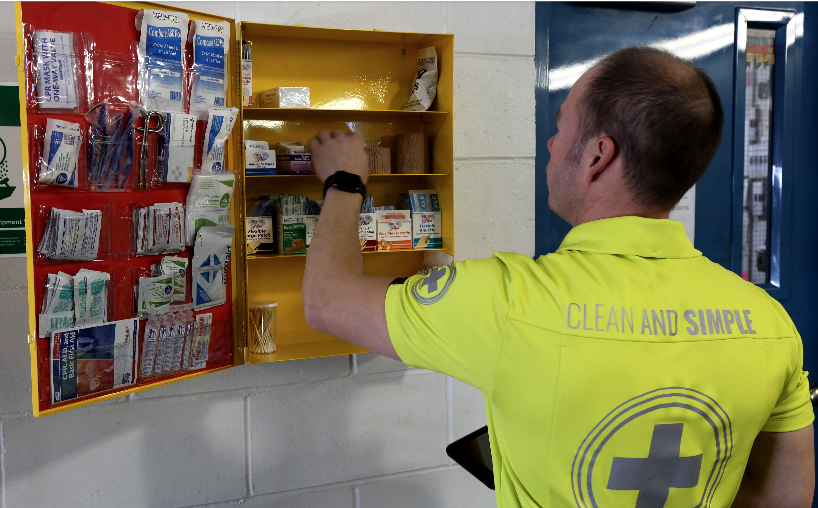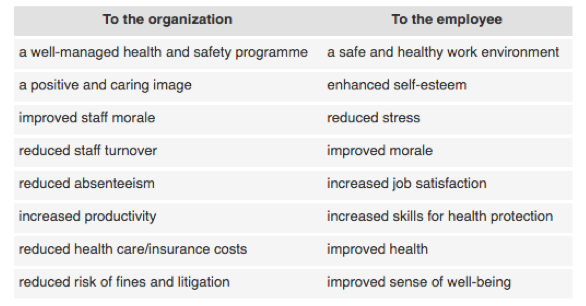Improving Your Safety Culture
Culture is arguably the most vital piece to a company’s success. More companies are shifting their attention to creating more thorough brand cultures, and preserving them through ongoing development.
One area that impacts company culture is safety. OSHA (Occupational Safety and Health Administration) laws and other standards make safety in the workplace a priority, but developing a culture that is committed to safety is one way to reinvest in your culture and the success of your company.
Definition of Culture
Culture is defined as a “set of shared attitudes, values, goals, and practices that characterizes an institution or organization.” It is also simply known as “the way we do things here.”

Safety Culture
Safety culture is defined by the beliefs, attitudes, and work practices of management and employees, including the way people act and behave in terms of safety and health.
Although dual accountability between employees and management is required to create the best safety culture, under OSHA, the OSH Act states employers are ultimately responsible for developing and promoting a safety culture that is an integral part of the organization. Employers can do this by understanding the importance of leadership commitment. A positive safety culture starts at the top.
“Senior leaders have the strongest visible effects on an organization,” according to Dale Carnegie Digital. And they “steer the organization towards its vision.” by example and clearly communicating expectations reflect the best health and safety results.
Safety vs. Production
Furthermore, safety must be just as important as productivity. Ignoring safety creates great risk and cost including, “emergency response and medical care, lost time of employees in production, workers’ compensation insurance premiums, potential fines from regulatory agencies and litigation from injured workers or their families.”
How to Improve
An effective safety culture doesn’t happen overnight. It is a continuous process that requires a “large commitment on behalf of the entire company.” Some tips for building and improving your safety culture include doing the following:
- Define safety responsibilities: Do this for each level within your organization. This should include policies, goals and plans for the safety culture.
- Share your safety vision: Everyone should be in the same boat when establishing goals and objectives for their safety culture.
- Enforce accountability: Create a process that holds everyone accountable for being visibly involved, especially managers and supervisors. They are the leaders for a positive change.
- Provide multiple options: Provide different options for employees to bring their concerns or issues full-face. There should be a chain of command to make sure supervisors are held accountable for being responsive.
- Report, report, report: Educate employees on the importance of reporting injuries, first aids and near misses. Prepare for an increase in incidents if currently there is under-reporting. It will level off eventually.
- Rebuild the investigation system: Evaluating the incident investigation system is critical to make sure investigations are conducted in an effective manner. This should help get to the root cause of accidents and incidents.
- Build trust: When things start to change in the workplace, it is important to keep the water calm. Building trust will help everyone work together to see improvements.
- Celebrate success: Make your efforts public to keep everyone motivated and updated throughout the process.
Benefits of Safety Culture Promotion
According to the World Health Organization (WHO), it is very beneficial to pay proper attention to employee health and safety.

Commitment
It’s important for an employer to show interest in an employee’s well-being. And one of the simplest ways to convey the importance of health and safety is to provide employees with appropriate equipment, first aid supplies, and proper training.
A first aid and safety program managed by CITY will significantly contribute to an organization’s safety culture. Furthermore, our flame resistant and high visibility garment options provide necessary protection for employees exposed to flash fires or electric arcs, or for those who need enhanced visibility.
Additionally, we help clients save cost, stay compliant, improve health and morale, and to provide a safer work environment for their employees.
“When a business invests in a managed safety program, everyone wins,” Al Voigt, CITY facility services representative, said. “It truly shows employees that their safety is a top priority.”
For a full list of CITY’s safety options and a customized solution, please contact us.
Comments
Comments are closed.